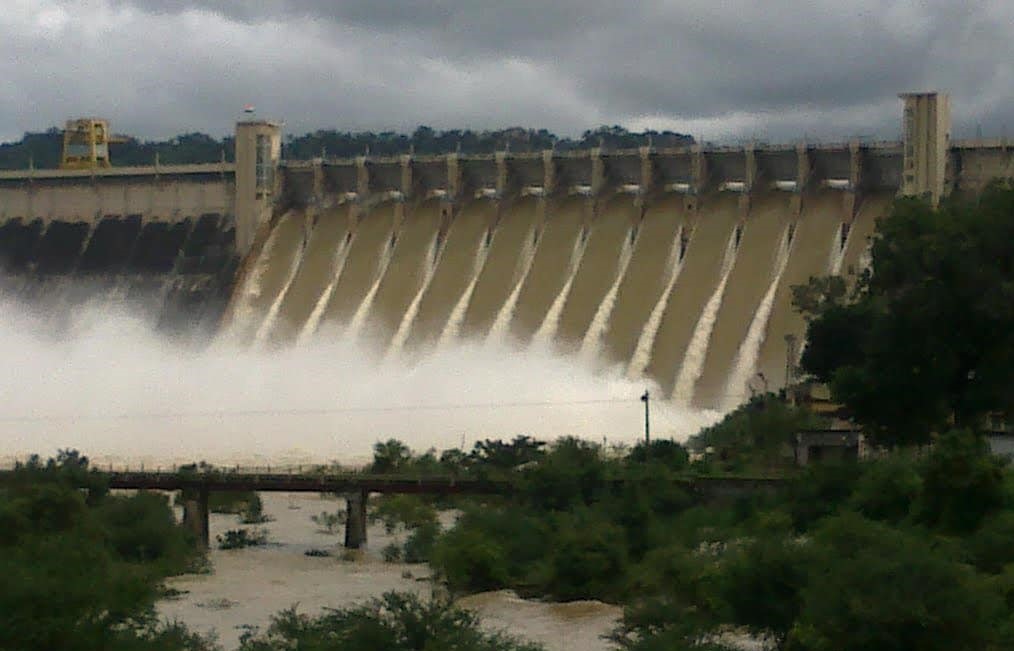Govind Ballabh Pant Sagar is located in Uttar Pradesh’s Sonbhadra district. It is largest man made lake in India. The reservoir of the Rihand Dam creates the lake. Similarly, Dhebar Lake, also known as Jaisamand Lake, is second largest man made lake in India. Govind Ballabh Pant Sagar is Uttar Pradesh’s largest and most diverse project. It covers the construction of a 934-meter-long, 91-meter-high straight gravity concrete dam across the Rihand River at Pipri village in Sonbhadra district. The Govind Ballabh Pant Sagar reservoir holds 10,608 million cubic metres of water and covers 130 square kilometres.
Govind Ballabh Pant Sagar Dam
The Govind Ballabh Pant Sagar Dam, also known as Rihand Dam, is located near the village of Pipri in Sonbhadra district of the Indian state of Uttar Pradesh. Govind Ballabh Pant Sagar Dam in the Indian state of Madhya Pradesh is part of Rihand Dam. The reservoir at Rihand dam is called Govind ballabh pant sagar and is largest man made lake in india. The dam was built on the Rihand River, a tributary of the Son River and Govind ballabh sagar is the reservoir lake.
The dam has a 190-meter spillway to channel floodwaters from the Rihand River into the reservoir. The largest man made lake in India, Govind Ballabh Pant Sagar, is located in the Sonbhadra district.
Also Read: Nowgong Chhatarpur: First smart city of India and History of the place?
The development took place between 1954 and 1962, with the primary goal of generating 300 megawatts of hydroelectric electricity. It is now managed by the Uttar Pradesh Hydroelectricity Corporation Ltd. The dam has a height of 91.44 metres and a length of 934 metres. Throughout the year, the water stored in this dam is released on a regular basis into River Son for irrigational purposes. It contains 61 joints and ground blocks in total. Sonebhadra has been dubbed India’s energy capital since the dam was built. It is in charge of generating over ten thousand megawatts of electricity and distributing it throughout the North Indian states.
As early as 1940, British colonial authorities wanted to build a dam on the Rihand River. This structure has the ability to develop irrigation in the area as well as generate hydro-electric power. The Indian government approved survey activities following independence in 1952. The building began in 1954 and was completed in 1962.
Read More : India’s second Largest man made lake- Dhebar Lake history
Largest man made lake in india – Govind Ballah Dam
Govind Ballabh Pant Sagar Dam is the largest artificial reservoir (man made lake) in India and part of the Chambal project. It is the second largest artificial reservoir in India and the largest in terms of volume. Home International Fishing Outdoor Map Location of Indian waters Location Reservoir (s) Govind Ballabh Pant Sagar Dam The reservoirs are indicated on the map of the National Geospatial Agency (NGA).
The height of the Govind Ballabh Pant Sagar is 9,144 m and the length 934 m. The water stored in the reservoir is drained from the river periodically throughout the year. The construction of Rihand Dam has led to the forced resettlement of more than 100,000 people. Many superthermal power plants are located in the basin of the reservoir. Despite this growth, serious questions remain about the nature of the development project, with tens of thousands of locals forced to relocate across the country as a result of the dam’s construction and tens of millions across India.
In 1964, at the inauguration of the Rihand Dam in Singrauli, India’s first Prime Minister, Jawaharlal Nehru, promised to transform the region into a ‘Switzerland of India’ [2], and the dam is 934 meters long and 91 metres high. The Tehri Dam in the Indian state of Uttarakhand is a rock and earth filled dam and multipurpose river valley project.
Also Read: Waste to Wonder Theme Park, Delhi: 10 things about the park with ‘Seven Wonders of the World’
The concentration of five heavy metals (Cu, Cd, Mn, Hg) was measured in water and soil sediments collected from various parts of aquatic macrophytes in Asia’s largest anthropogenic lake, Gobind Ballabh Pant (GBP) Sagar.
The construction of the Rihand Dam triggered the transformation of the Singrauli region from an agricultural society to an industrial society. With the construction of the dam Sonebhadra was named the energy capital of India. The largest artificial reservoir in the south of the state is the pride of Uttar Pradesh.
The construction of Rihand Dam and the destruction it has caused hundreds of thousands of lives illustrate the need for such an approach. Continued forced relocation is not only cruel and callous, but also threatens the profits of projects such as this dam. The construction of a dam to harness the power of Rihand is the first step in the development of the region and brings industry to the region.
Singrauli is one such prime area, often referred to as the coal zone of India. The region produces more than 10,000 MW of power, the largest in the country after Dadri in western Uttar Pradesh. Sonebhadra is responsible for generating 10,000 MW of electricity and distributing it to the northern Indian states. The desert state of Rajasthan produced considerable amounts of Catla reservoirs in Ramgarh, Guda and Jaisamand. The Sathanur reservoir dominated Catla in 73-99, 1971-72 and 1980-81.
A comparative assessment shows that the proportion of Ca (Mg) and Na (K) in the coal mining belt tends to be lower than in other regions of the world. High Na (k) shows that sedimentation of rock with carbon particles consisting of weathering silicate minerals contributes to the drainage of pit water and the mixing and transport of fly ash.
